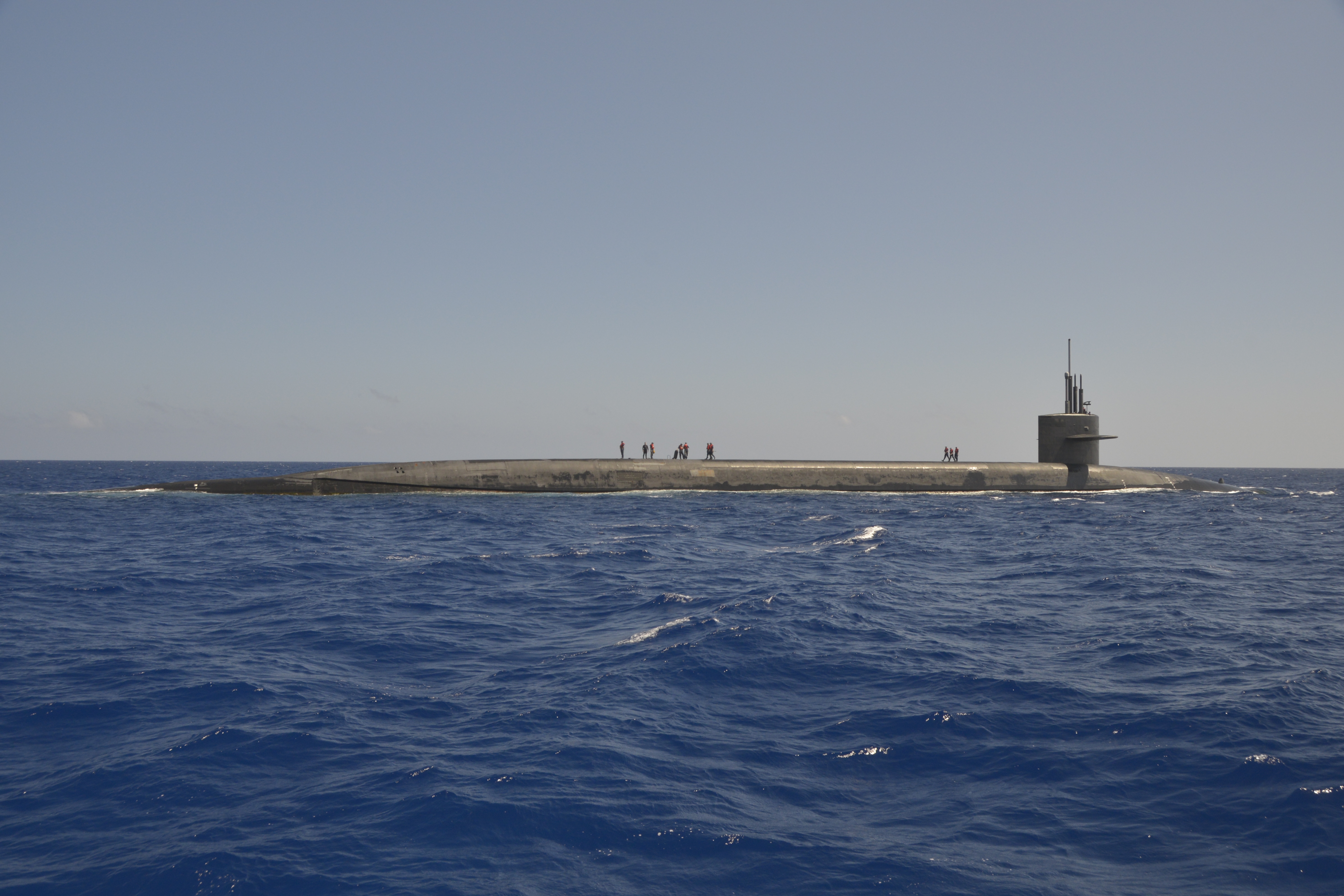
THE NAVY'S NEW NUKES
The Cold War ended more than a quarter of a century ago. New threats to U.S. security have arisen, but do they require the same kind of nuclear triad that the U.S. put in place to deter the Soviet Union? The Pentagon's answer to that question is a proposed trillion dollar upgrade to America's nuclear arsenal over the next 30 years.
In the first of a series of reports for the PBS NewsHour, veteran Pentagon correspondent Jamie McIntyre, who is now national security correspondent for Al-Jazeera America, and NewsHour deputy senior producer Dan Sagalyn examine the Navy's plan to replace its existing fleet of 14 Ohio-class nuclear-armed submarines with 12 next-generation vessels—at a cost of over $100 billion.
The Navy says that's a bargain, but other experts tell Jamie and Dan that it is an ill-considered extravagance that the U.S. does not need and cannot afford. To listen to extended interviews with experts on both sides of the debate, visit the NewsHour's website.
CHICKEN BILLIONAIRE
The World Bank's mandate is simple: end global poverty. So who benefits when the bank's investment arm, the International Finance Corporation (IFC), invests millions in a Ukrainian chicken farm? The answer is Yuriy Kosiuk, a billionaire tycoon whose company dominates Ukraine's domestic poultry market and exports chicken and luxuries such as foie gras across Europe.
Pulitzer Center grantees Matt Kennard and Claire Provost, in this investigative piece for The Guardian, report that "hundreds of millions of dollars in development finance from the World Bank's investment arm have helped to fund the controversial expansion of (Kosiuk's) agribusiness empire in Ukraine, amid growing concern that land and farming in the country are increasingly falling into the hands of a few wealthy individuals."
The IFC says its investment with Kosiuk "has created jobs and promoted the development of the agribusiness sector, a key driving force for the national economy." But local residents say that they are being pressured into giving up their land. They also complain that the smell and noise from the industrial chicken farm are overwhelming and that their roads and houses have been damaged by heavy trucks driving past day and night.
PLATINUM
With the recent publication of "Platinum," Pulitzer Center grantees Jack Shenker and Jason Larkin explore new ways in which to produce and distribute in-depth journalism and engage diverse audiences. The project grew out of Jack and Jason's investigation into a notorious police massacre of striking South African mineworkers in August 2012. Their work was published in Foreign Policy and The Guardian.
"Platinum" takes the form of a standalone publication featuring large double-sided posters of Jason's photos bound together with a booklet containing a long version of Jack's text essay in either English or Xhosa, the language spoken by many mineworkers and their families on the platinum belt.
Three hundred free copies of "Platinum" have been presented to grassroots organizations in the mining communities. The idea, according to Jack, is to make the journalism available to the people "whose lived experiences and political struggles formed the basis of our reporting."
GOODBYE MR. HE
With sadness, we note the death last week of He Quangui, who developed silicosis more than a decade ago as a result of working in one of China's numerous unregulated gold mines. Pulitzer Center grantee Sim Chi Yin spent four years documenting He's courageous struggle with the incurable disease. Through Chi Yin's powerful images, published in The New York Times, National Geographic and elsewhere, the story of He and his beloved wife Mi Shixiu touched us all.
Until next week,
Tom Hundley
Senior Editor





